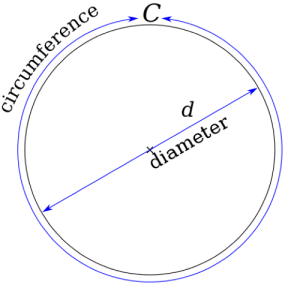
Happy Pi Day everyone! Pi Day is celebrated every year on March 14, when written in month-day format (3-14), which represents the three digits of the value of π. Pi is the mathematical constant of the ratio of any circle's circumference divided by its diameter. It's also the day to celebrate pi's delicious homophone pie! Pie being a baked item of savory or sweet ingredients encased in a baked crust. Together, pi and pie make for a delicious opportunity to learn more about the importance of pi in the field of science and mathematics and the wonders that is baking and, more importantly, eating pie!
Brief History of Pi Day
The earliest well-known celebration of Pi Day was in 1988 at the San Francisco Exploratorium, organized by physicist, Larry Shaw. Exploratorium staff and members of the public marched in a large circle in the public area of the museum and then enjoyed a variety of fruit pies. It wasn't until 2009, when the US House of Representatives passed a non-binding resolution (111 H. Res. 224) that recognized March 14 as National Pi Day.
How to Celebrate Pi Day
You could follow in the footsteps of Larry Shaw and march in a complete circle and then rejoice with a wedge of pie. Or perhaps, follow the lead of a variety of Pi adepts before you and memorize the digits of Pi (some have memorized up to 70,000 digits!). Or simply, bake a pie, calculate its circumference using pi, then eat the pie. For preschoolers, check out our Virtual Preschool Program: Math in Play! There's no wrong way to celebrate pi day, as long as you're celebrating both Pi and Pie!

About Pi or π
Pi (also written as π) is a mathematical constant. It is the ratio of any circle's circumference (the measurement around the outside the circle) over its diameter (the measurement across the circle). This constant means that regardless of the actual measurements of a circle's circumference and diameter, the circumference will always be a little more than 3x's its diameter, roughly 3.14. Give it a try! Take any circle and divide its circumference by the diameter. The result is always 3.14... It's truly magical to see this ratio in action.
While Pi originated in the realm of mathematics and geometry, its legacy is seen in so many more fields of science: physics, number theory, statistics, mathematical analysis, and computer engineering. Pi is what's called an irrational number--it cannot be expressed as a true ratio of integers. The closest approximation of Pi as a ratio is 22/7. If you were to use long division to divide 22 by 7, you could essentially keep dividing and dividing and dividing and it would seemingly never end. As such, pi has become an unofficial benchmark for testing the computational capacity for supercomputers. Ask a supercomputer to calculate for Pi and you can measure not only how many digits the computer can populate before running out of memory, but also how quickly it can compute the formula.
Read More About Pi

About Pie
Simply speaking, a pie is an enclosed or open mixture of sweet or savory ingredients surrounded on some side or sides of a crust that is baked or fried. The term "pie" most commonly derived from magpie, a bird that collects odds and ends into their nests much like a pie being a collection of vegetables, fruits, nuts, meats, and other ingredients in a nest of crust.
Predominately, pies are defined solely by their crusts:
- "Filled": includes a single bottom crust. Example: a quiche
- "Top crust": includes only a crust lid or top. Example: a shepherd's pie
- "Two-curst": includes both a bottom crust and a lid/top. Example: Lattice-topped strawberry rhubarb pie
You can see that these definitions are open enough to include many things you wouldn't normally consider to be a pie a pie: shepherd and cottage pies, apple pies, quiches, pumpkin and sweet potato pies, fruit pies of all kinds, nut pies, custard and cream pies, hand-raised pies, Jamaican meat patties, and Cornish pasties. The last two offer a link to even more things that could, in a sense, constitute as pies: turnovers, empanadas, baozi, and knishes. For the purposes of Pi Day, though, you may want to stick with pies that are circular shaped to get the full effect!
Bake That Pie!
How Will You Celebrate Pi Day?
Tell us in the comments!



Add a comment to: Celebrate Pi Day!